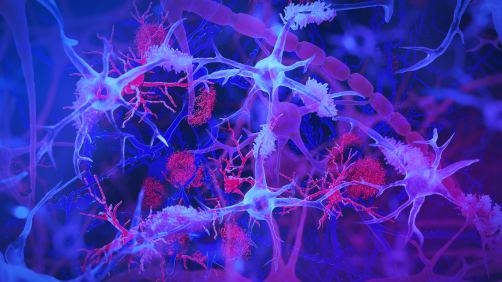Scientists have developed the most detailed map ever created of brain regions affected by Alzheimer’s disease, revealing how the condition systematically dismantles the brain’s natural defense mechanisms against harmful protein buildup.
In a study published May 2, 2025, in Nature Communications, researchers from Tulane University employed cutting-edge spatial transcriptomics technology to examine the prefrontal cortex – the decision-making center of the brain – at unprecedented resolution, capturing genetic activity at nearly the subcellular level.
“The human brain is the most complex organ in the human body and the mechanism of many diseases like Alzheimer’s is elusive,” said senior author Hui Shen, associate director of the Center for Biomedical Informatics & Genomics at Tulane University School of Medicine.
Breaking Through the Resolution Barrier
The research team utilized Stereo-seq technology, which provides approximately 250 times greater resolution than previous techniques, allowing them to observe molecular changes in individual cells. This technological leap enabled them to track how neurons and supporting cells respond differently to stress in healthy aging brains versus those affected by Alzheimer’s.
One of the study’s most striking discoveries was the progressive disappearance of the brain’s layered architecture as Alzheimer’s advances – a phenomenon that lead author Yun Gong noted “had not been observed before.”
Failing Protection Systems
By analyzing six male brains at varying stages of Alzheimer’s disease and comparing them with age-matched controls, the researchers identified three critical protection systems that progressively weaken as the disease advances:
- Neuron protection networks
- Protein dephosphorylation systems (which prevent tau tangles)
- Amyloid-beta regulation pathways
When functioning properly, these systems prevent the buildup of toxic proteins. However, in Alzheimer’s patients, these protective interactions diminish or disappear entirely.
“The most important thing is that we’ve identified several interesting interactions at the molecular level that work to protect neurons under stress, and these interactions disappeared in Alzheimer’s patients,” explained Gong.
Potential Treatment Target Identified
Perhaps most significantly, the researchers identified ZNF460, a transcription factor that appears to regulate all three protection systems. This finding suggests targeting this protein could potentially preserve these crucial defense mechanisms.
The study also revealed that when under stress, healthy brains activate additional protective measures through specific ligand-receptor interactions between neurons and nearby support cells. These protective interactions were substantially reduced in Alzheimer’s patients, suggesting another potential intervention point.
Beyond Academic Understanding
With more than 55 million people worldwide suffering from dementia – Alzheimer’s accounting for 60-70% of cases – and current medications only temporarily easing symptoms, these findings represent a potential pathway toward treatments that could actually slow disease progression.
Moving forward, Shen and Gong plan to investigate whether targeting ZNF460 could preserve neural protection systems and potentially halt Alzheimer’s progression. They also aim to expand their mapping efforts to other brain regions affected by the disease.
“This is just one step toward understanding pathophysiology of Alzheimer disease,” Shen said. “Different areas of the brain may respond differently to the disease development so we have to keep working to examine other regions and create the most comprehensive image we can.”
If our reporting has informed or inspired you, please consider making a donation. Every contribution, no matter the size, empowers us to continue delivering accurate, engaging, and trustworthy science and medical news. Independent journalism requires time, effort, and resources—your support ensures we can keep uncovering the stories that matter most to you.
Join us in making knowledge accessible and impactful. Thank you for standing with us!

